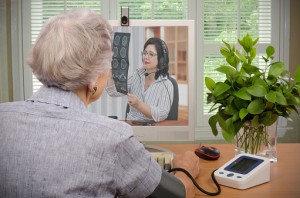Divine has created humans in a very complex hierarchical system. Everybody has a different structure of veins. Some people are generally inclined to have troublesome veins genetically. Veins also start contracting in old age. Sometimes it becomes a tough row to hoe to locate veins in some people. Whether your veins are narrow or dilated, it is very important to know some tips and tricks to locate difficult veins. So that, you would not face any difficulty in the hour of need.
There can be multiple reasons for difficult veins. Let’s explore some tips and tricks that help in locating the difficult veins.
1. Vein Finder
Nowadays, modern technology has made life so much simpler. Vein finders have made it quite easier to locate difficult veins. With a vein finder, venipuncture becomes so convenient. When you find it difficult to locate a vein, you can use a Vein finder. It also saves time and locates veins with accuracy. Vein finder has a built-in white light that helps in the examination of a patient’s veins. It is composed of so many LEDs that make veins visible.
2. Use Tourniquets
Injecting is made simpler using tourniquets. Tourniquets can be useful in two ways. To begin with, tourniquets expand veins, making them larger and simpler to locate and inject into. Additionally, dilation of the veins assists in “anchoring” them, making them less prone to rolling about. Blood flows through the arteries in your arm and backs out from veins. A tourniquet helps to block the blood temporarily from exiting and allowing it to flow in your arm. In this way, the vein dilates for a short time, making it simpler to locate.
Before withdrawing the needle, loosen the tourniquet after 1 minute. If you keep the tourniquet on for more than a minute, the number of red blood cells may change, potentially affecting the test. This will be painful if the needle is removed while the tourniquet is still on.
3. Warm Up Your Body
It’s a good practice to warm up the body before injecting a needle into the arm. As the body temperature rises, the blood flow increases. As a result, veins become dilated. You can increase the temperature of your body in a variety of ways. For this, rub the area with a hot cotton towel for a few minutes. Or you can directly dip your arm in lukewarm water for a few minutes. You can also take a hot shower before cannulation. Massage the area where you want to cannulate. You can also do some warm-up exercises that will raise the temperature of your body.
4. Hydrate Your Body
If you have narrow or difficult veins, you should hydrate your body before inoculation. When your body hydrates, veins expand automatically. For hydrating your body, you should drink shakes, fluids, juices, etc. Intake as much water as you can. Make it a habit to drink more water on a regular basis. This will enlarge your veins. But remember, don’t drink too much water a day before inoculation. This will disrupt your sleep and you’ll have to go to the washroom again and again and you’re more likely to suffer from insomnia.
5. Create Centrifugal Force
Allow gravity to make infusion easier by increasing blood flow to your arm and hand.
Hang down your arm while lying down on a bed. Squeeze and release a ball repeatedly. This will also stimulate blood flow. Swing your arm like a pendulum. This will create centrifugal force that will increase the blood flow in your arm. Consequently, your veins start to dilate.
6. Release Your Tension
When you place a cannula in your vein, it causes tension that tightens your veins even more making injection much more challenging. To release this tension, listen to music, take slow, deep breaths, divert your attention towards something else, and don’t be too harsh on yourself if you have trouble.
7. Place Needle Correctly
Sometimes, you could have complications with the needle at times, such as penetrating too deep into the tissues or putting it at a low angle. Without extracting the needle from the skin, slide back a little. While the needle is still under the skin, adjust the angle so that it may be entered into the vein. Obtaining blood from a point where your veins are set apart or come together is not a good idea. This can cause bleeding beneath the skin.
8. Sanitize The Area
Alcohol is a typical sanitizer. Clean the area for at least a half minute. It will evaporate in a minute or two. Alcohol is preferable over iodine because if iodine enters the bloodstream, it can change the numbers that the lab is searching for. If you do use iodine, make sure to follow it up with a 70% alcohol swab.








